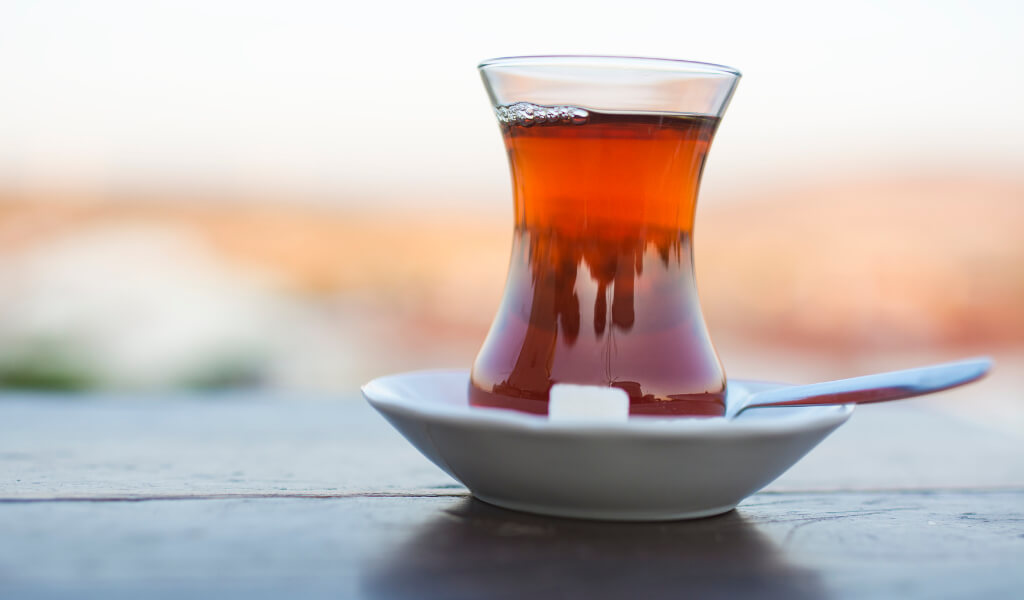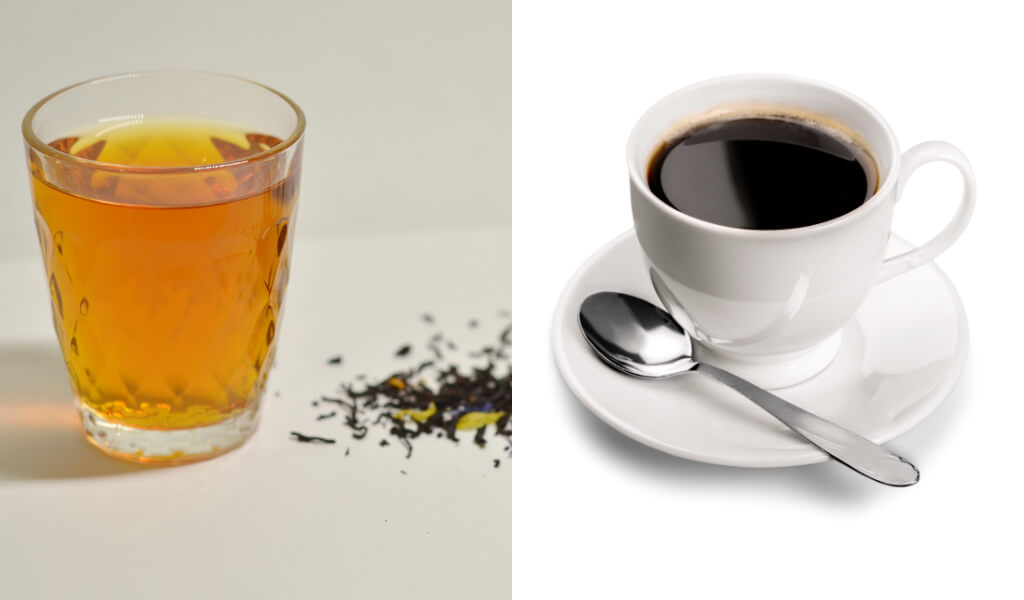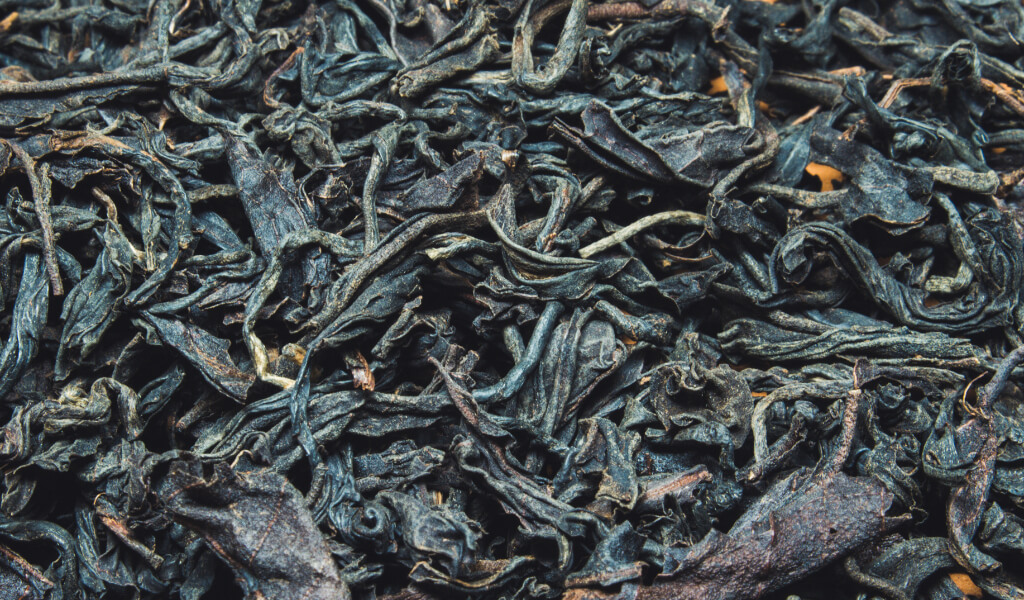Have you ever wondered, “Does Earl Grey tea have caffeine?” I certainly did, which sparked my curiosity to delve deeper into this refreshing brew.
Today, I’m excited to take you on an enlightening journey. I’ll unveil the secret behind Earl Grey’s Caffeine content, compare it to other popular drinks, and discuss how to balance Caffeine intake.
Quotes of tea with You
“There should be medals struck for men who produce tea at exactly the moment it’s needed.”
― Jodi Taylor, A Trail Through Time
Does Earl Grey tea have caffeine?
Yes, Earl Grey tea contains caffeine. Earl Grey is a blend of black tea and bergamot oil, and black tea naturally contains caffeine. The amount of caffeine in Earl Grey can vary depending on the specific blend and brewing method used, but it generally has about 40-70 milligrams of caffeine per 8-ounce cup.
How Much Caffeine In Earl Grey Tea?
Your Earl Grey Tea contains Caffeine ranging from 40 to 120 milligrams. It also has low amounts of Certain Vitamins and Minerals, Specifically Iron and Potassium. An 8-ounce cup of Earl Grey has approximately 40-70mg of Caffeine.
You might think, “Is that a lot or a Little?” To compare, a similar-sized cup of Coffee generally has around 95mg of Caffeine. So, Earl Grey offers a lighter yet still stimulating option for your tea or coffee time.
Caffeine earl grey vs coffee
Earl Grey tea has approximately 50 milligrams of Caffeine in an 8-ounce serving, which is a bit lower than the typical amount in a cup of coffee (around 80 milligrams). The Caffeine level in Earl Grey tea can differ based on how it’s made.
An average cup of coffee usually contains approximately 95mg of caffeine, whereas an 8-ounce portion of Earl Grey tea typically holds anywhere from 30 to 50mg. This reduced caffeine content often results in Earl Grey offering a gentler, longer-lasting source of energy, as opposed to the immediate kick you might experience from coffee.
Switching from coffee to Earl Grey could be a great strategy for people sensitive to caffeine or those aiming to reduce their caffeine intake.
Factors Influencing the Caffeine Content
Several factors can adjust the Caffeine content in Earl Grey tea.
For one, the variety and quality of black tea leaves can make a significant difference. According to the USDA National Nutrient Database, different varieties of tea leaves can contain varying amounts of caffeine.
Secondly, the brewing method plays a critical role. If you steep your tea for a longer period, say, five minutes instead of three, more caffeine is extracted. The temperature of the water is equally important – hotter water extracts more Caffeine.
Lastly, the age and size of the tea leaves can affect the best earl gray tea caffeine levels, as older and larger leaves tend to have less Caffeine than younger, smaller ones.
Comparing the Caffeine Content: Earl Grey Tea vs. Other Popular Teas
When I put Earl Grey tea up against other popular teas, it fits in the middle regarding caffeine content.
The Mayo Clinic states that an 8-ounce green tea typically contains 25-29 milligrams of caffeine. Meanwhile, Chai tea, a blend of Black tea and Spices, generally has about 47 milligrams per cup. Matcha, made from powdered green tea leaves and thus more concentrated, often contains up to 70 milligrams per serving.
When it comes to coffee, an average 8-ounce serving typically contains around 95 to 200 milligrams of caffeine, as reported by the Center for Science in the Public Interest. In contrast, Earl Grey tea offers a moderately caffeinated option with approximately 40 to 70 milligrams per cup. This makes Earl Grey tea a versatile choice suitable for many tea enthusiasts.
Health Effects of Earl Grey Tea Caffeine
As an avid tea drinker, I’ve spent a lot of time studying the health effects of the caffeine found in our favorite brews, including Earl Grey. So, let’s delve into Earl Grey tea benefits and risks in this beloved blend.
Potential Benefits of Moderate Caffeine Intake from Earl Grey Tea
A moderate caffeine intake from Earl Grey has had some remarkable benefits. It provides a gentle lift to my mood and boosts my alertness without giving me the jitters. There’s science to back this up, too.
Research published in the American Journal of Clinical Nutrition has indicated that moderate consumption of caffeine can lead to enhanced cognitive abilities and a more positive mood. Furthermore, the caffeine present in Earl Grey tea, as reported in the European Journal of Clinical Nutrition, can assist in promoting fat loss and improving physical performance.
Potential Risks of High Caffeine Intake from Earl Grey Tea
As with anything, though, more of a good thing can be needed. Overindulging in the caffeine from Earl Grey could lead to some unwelcome effects. High caffeine intake might cause restlessness, insomnia, and an increased heart rate.
As someone sensitive to caffeine, I’ve learned that moderating my intake is crucial for keeping my sleep routine intact and my body at ease. The American Heart Association also warns that excessive caffeine can lead to irregular heart rhythms or amplified stress responses.
How to Control Caffeine Intake with Earl Grey Tea
Some of the following tips may help you.
Tips for Decreasing Caffeine Content in Earl Grey Tea
I’ve done a little at-home experimentation over the years and found how to brew Earl Grey tea better to eliminate the caffeine inside. Let’s check out methods to decrease the caffeine content in Earl Grey tea.
First, steeping your tea for a shorter period can limit the amount of Caffeine in your brew. I’ve tested this several times, and it holds. For instance, steeping Earl Grey for three minutes instead of five significantly reduces Caffeine.
Also, using cooler water can help. In my experiments, I’ve found that brewing tea at 176°F (80°C) instead of boiling reduces the caffeine released from the tea leaves.
Finally, using fewer tea leaves can reduce the Caffeine content. I often use a single teaspoon for my cup of Earl Grey, which provides a robust flavor without as much Caffeine.
Best Time to Drink Earl Grey Tea to Manage Caffeine Intake
Another thing I’ve learned is that when you drink your Earl Grey can also make a difference. I enjoy my first cup in the morning when the caffeine can kickstart my day. According to the Sleep Foundation, it’s also a perfect time since caffeine can take up to 6 hours to wear off. Drinking it too close to bedtime might interfere with a good night’s sleep.
Exploring Decaffeinated Earl Grey Tea
As we continue our exploration of Earl Grey, I’d like to take you on a less-traveled path that leads to decaffeinated Earl Grey.
If you’re cutting back on caffeine or prefer a caffeine-free lifestyle, this one’s for you!
How is Earl Grey Tea Decaffeinated?
The creation of decaffeinated Earl Grey fascinated me from the first time I discovered it. The question arose was, “How do they remove the caffeine from the tea leaves?” After some research, I discovered several methods, but the most commonly used one is the supercritical CO2 process.
This technique employs high-pressure carbon dioxide, a natural solvent, to extract caffeine from tea leaves. What’s remarkable about this approach is that it preserves the flavorful compounds while eliminating most caffeine. Therefore, if you’re anxious about sacrificing the robust and unique taste of Earl Grey when choosing decaffeinated, you can be confident that there’s no need for concern.
The Taste and Quality of Decaffeinated Earl Grey Tea
Now, let’s talk about the taste. As a long-time Earl Grey fan, I was initially skeptical about how decaf would measure up. But after trying a few brands, the difference in taste is almost unnoticeable. In a blind taste test, I conducted at home with some friends, and most couldn’t tell the difference between the regular and decaf versions.
Let’s Talk About the Side Effects of Caffeine
So what is earl grey tea? And how does its caffeine work? While caffeine, the pick-me-up in Earl Grey, can be a beneficial stimulant, it’s crucial to understand its potential drawbacks.
Overconsumption can lead to discomforts like restlessness and difficulty sleeping.
According to the Mayo Clinic, more serious repercussions may include an increased heart rate and high blood pressure. It’s also worth noting that caffeine can be habit-forming, with withdrawal symptoms possible if usage is abruptly stopped.
How Much Caffeine Is Safe for You?
Determining earl grey tea how much caffeine is safe for you depends on your body weight, tolerance, and overall health.
The Mayo Clinic suggests that up to 400 milligrams of caffeine, roughly equivalent to four 8-ounce cups of brewed Earl Grey tea, can be safely consumed daily by most healthy adults.
However, it’s essential to remember that individual tolerances can vary greatly, so it’s always best to listen to your body’s response and adjust accordingly.
The article is based on the experience and general information of
Shanna Smith of Spiritea drinks.
FAQs
What is the effect of caffeine on the body and brain?
By inhibiting adenosine receptors, caffeine can improve concentration and alertness. By releasing fatty acids from adipose stores, the body can improve physical performance.
Does decaffeinated Earl Grey tea taste the same as regular Earl Grey tea?
According to my own experience and taste testing, the flavor difference between decaffeinated and normal Earl Grey tea is frequently insignificant, making it a fantastic substitute for people who are trying to minimize their caffeine intake.
Is earl grey tea caffeinated natural or added?
The caffeine in Earl Grey tea can vary depending on the type and brand. In most cases, the caffeine is natural, coming from the tea leaves used to make the base black tea. However, some brands may add caffeine to their Earl Grey tea for an extra boost.
Is the caffeine content the same in all Earl Grey teas?
The caffeine content in Earl Grey teas can differ from brand to brand and even within various blends. It primarily depends on the base black tea used and whether any additional caffeine has been added during processing.
Are there alternatives to Earl Grey tea for those seeking less caffeine?
There are caffeine-free alternatives to Earl Grey tea for those looking to reduce their caffeine intake. Herbal teas like chamomile or rooibos can provide similar flavor profiles without the caffeine content found in black tea.
How does brewing time affect the caffeine content in Earl Grey tea?
Brewing time can affect the caffeine content in Earl Grey tea. Longer steeping times can result in higher caffeine levels because the tea has more time to release caffeine into the liquid.
Can the caffeine in Earl Grey tea cause headaches?
While caffeine can trigger headaches in some individuals, it’s not a common side effect of moderate caffeine consumption from Earl Grey tea. However, people sensitive to caffeine should monitor their intake to avoid potential discomfort.
I’m Shanna, creator of Spiritea Drinks. I’m all about teaching people to grow their own food, tea, cook what they harvest, and eat with the seasons.





